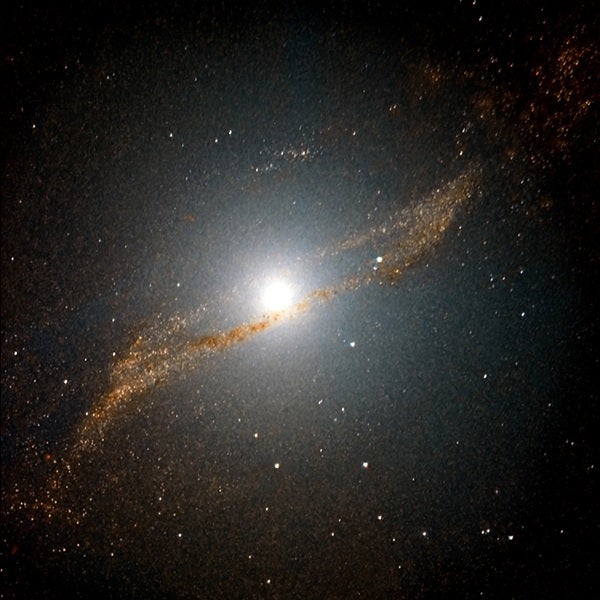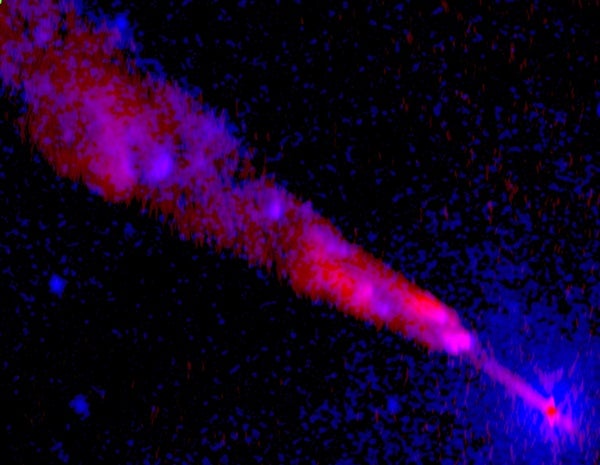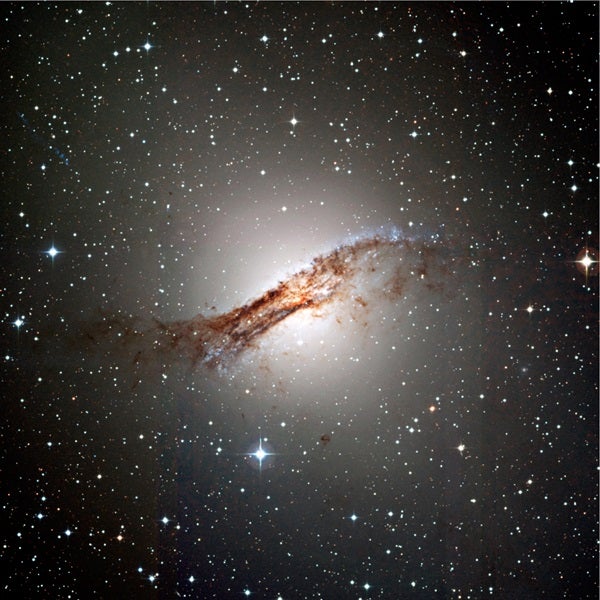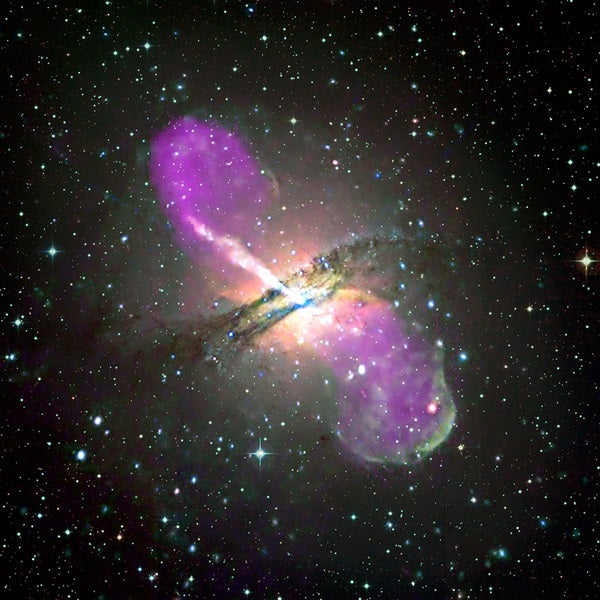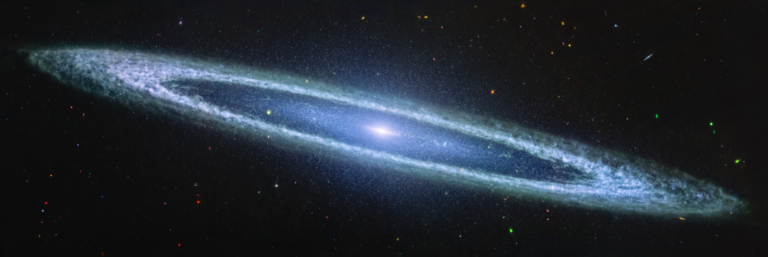At least 125 billion galaxies fill the known universe, but most are so distant that they only appear as faint smudgy dots through our best telescopes — assuming they’re even visible at all. Only one out of every 100,000 is cataloged or given a reference number.
Nearer galaxies offer more detail. Three million large galaxies float within a billion light-years of Earth, although most of these still appear tiny and virtually featureless. But when we turn our telescopes within 100 million light-years of wherever you call home — a volume of space that contains 2,500 major galaxies and 50,000 dwarf galaxies — well, this is the realm we can seriously study. Here alone, galaxies are near enough to show stunning detail.
Sometimes we hit the jackpot and find a peculiar galaxy — astronomers love anything “peculiar” — in the very closest volume of space, within 30 million light-years. That’s the case with Centaurus A. At 12 million light-years, it competes with the equally strange M82 (number 47 on our list) as the nearest galaxy emitting oddly intense radio waves.

Bringing the universe to your door. We’re excited to announce Astronomy magazine’s new Space and Beyond subscription box – a quarterly adventure, curated with an astronomy-themed collection in every box. Learn More >>.
Discovered by James Dunlop in 1826 from Australia, Centaurus A is one of the most peculiar galaxies in the cosmos. Despite being the fifth-brightest galaxy in the heavens, its location in far Southern Hemisphere skies hampered investigations for a long time. It simply never rises high for those in Europe and throughout most of the United States. In the late 1800s, however, it finally earned entry into the New General Catalogue as NGC 5128. But, despite its odd appearance, it never acquired a popular name like its photogenic cousins the Whirlpool (M51) and Pinwheel (M33) galaxies.
Centaurus A looks at first glance like a ball-shaped or giant elliptical galaxy, resembling M87 (number 25 on our list). But such galaxies are famous for being footloose and dust-free, while NGC 5128 is encircled by a prominent dark obscuration. It’s almost like some freakish hybrid — a combination of two totally dissimilar galaxy types, perhaps the long-sought “missing link” in galactic evolution.
Its history also offers a series of ever-greater surprises. Twenty years after its discovery, William Herschel’s astronomer son John provided this sleep-inducing description: “[It has] two semi-ovals of elliptically formed nebula appearing to be cut asunder and separated by a broad obscure band parallel to the larger axis of the nebula, in the midst of which a faint streak of light parallel to the sides of the cut appears.” Clearly, John was an astronomer deprived of sufficient contact with other humans.
Despite this strangely intriguing description, the 1800s remained a period when astronomers thought galaxies were nearby gas-blobs, and such “nebulae” already had a sufficiently large variety of forms that one more oddball wasn’t particularly noteworthy. Even after the 1920s, when many of these supposed nebulae were recognized as external galaxies, NGC 5128 remained largely overlooked because the Southern Hemisphere lacked large observatories.
Everything changed in 1949 when Australian astronomers, using the new technique of searching for radio waves from the sky, identified this galaxy as an intense source of such energies. Customarily, astronomers listed celestial radio sources using their constellation location followed by a capital letter, with the first discovered labeled “A.” Thus was born a new name for the galaxy: Centaurus A.
In 1954, using the great Hale Telescope at Palomar Mountain Observatory in California, Walter Baade and Rudolph Minkowski correctly suggested that Centaurus A’s strange structure resulted from the collision and merger of two galaxies, a giant elliptical and a spiral.
In the 1960s and ’70s, rocket-borne detectors showed that intense pulsing X-rays and gamma rays emanated from Centaurus A, along with infrared (heat) energy from some kind of tiny compact source in the galaxy’s core. Scientists soon identified it as an active supermassive black hole, which they also assumed was responsible for a strange jet rushing outward from the galaxy’s center. Later, they also discovered a jet made solely of X-rays, indicating violence on a scale rarely seen in the universe.
Today, thanks to advanced tools like the Spitzer Space Telescope, we know that galaxy Centaurus A has devoured at least one spiral galaxy like a praying mantis, its remnants forming that odd dark disk that visually dominates NGC 5128’s appearance. Meanwhile, Centaurus A’s black hole emits jets of solid particles that rush away at half the speed of light, although the mechanism behind those jets remains unknown.
Centaurus A flies from us at 300 miles (480 kilometers) per second as a normal part of the universe’s expansion, or Hubble Flow. But nothing else about it resembles the placid, well-behaved galaxies in our Local Group and cosmic neighborhood. As one of the 100 nearest galaxies to Earth, NGC 5128 offers a violent exhibition of galactic cannibalism, star birth, and unimaginable internal violence, all at a telescope-friendly distance. Yet it remains esoteric to observers not so much because of these peculiarities, but due to its inconvenient location for Northern Hemisphere observers, forever over the horizon.

